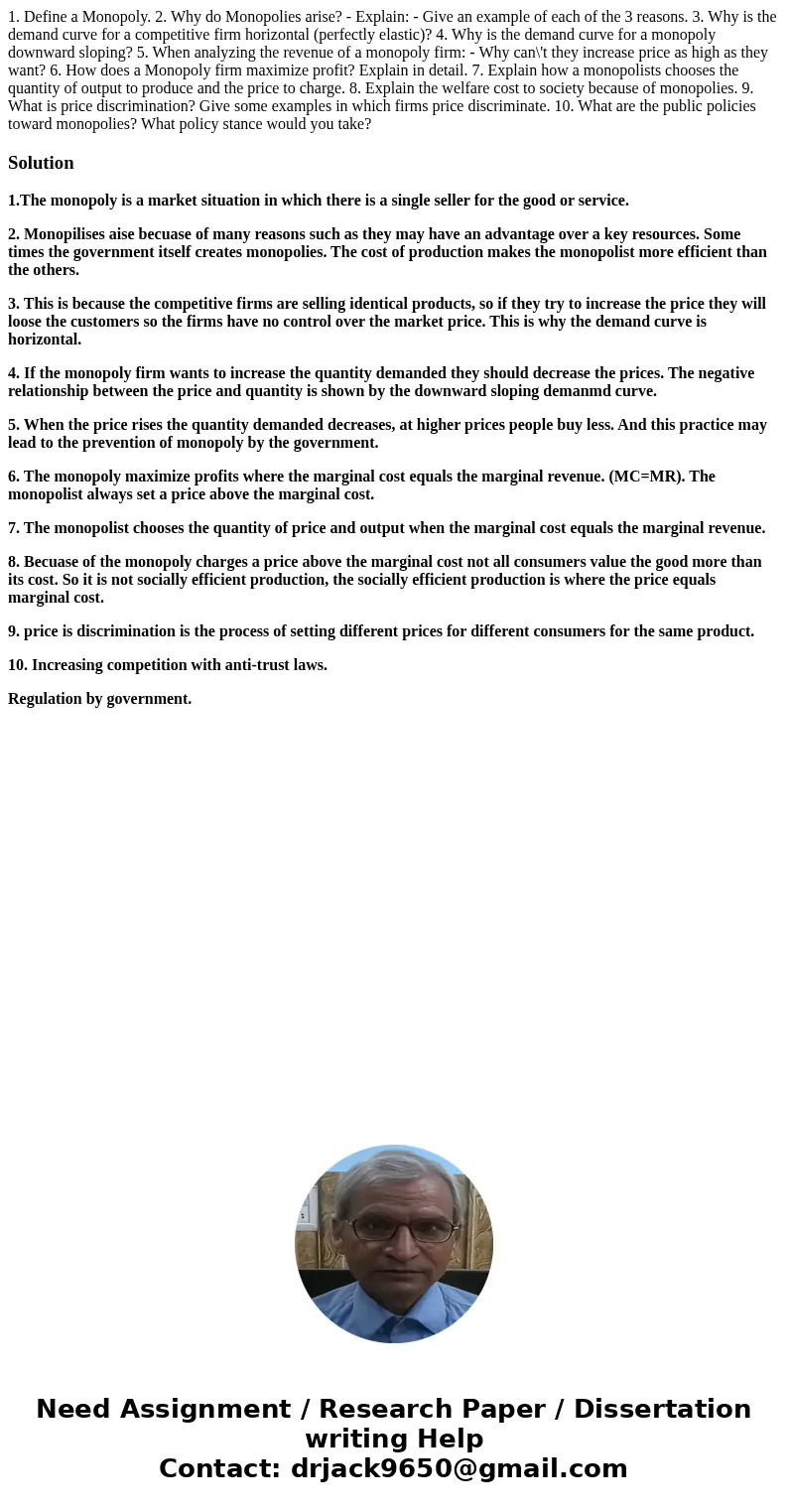1 Define a Monopoly 2 Why do Monopolies arise Explain Give
1. Define a Monopoly. 2. Why do Monopolies arise? - Explain: - Give an example of each of the 3 reasons. 3. Why is the demand curve for a competitive firm horizontal (perfectly elastic)? 4. Why is the demand curve for a monopoly downward sloping? 5. When analyzing the revenue of a monopoly firm: - Why can\'t they increase price as high as they want? 6. How does a Monopoly firm maximize profit? Explain in detail. 7. Explain how a monopolists chooses the quantity of output to produce and the price to charge. 8. Explain the welfare cost to society because of monopolies. 9. What is price discrimination? Give some examples in which firms price discriminate. 10. What are the public policies toward monopolies? What policy stance would you take?
Solution
1.The monopoly is a market situation in which there is a single seller for the good or service.
2. Monopilises aise becuase of many reasons such as they may have an advantage over a key resources. Some times the government itself creates monopolies. The cost of production makes the monopolist more efficient than the others.
3. This is because the competitive firms are selling identical products, so if they try to increase the price they will loose the customers so the firms have no control over the market price. This is why the demand curve is horizontal.
4. If the monopoly firm wants to increase the quantity demanded they should decrease the prices. The negative relationship between the price and quantity is shown by the downward sloping demanmd curve.
5. When the price rises the quantity demanded decreases, at higher prices people buy less. And this practice may lead to the prevention of monopoly by the government.
6. The monopoly maximize profits where the marginal cost equals the marginal revenue. (MC=MR). The monopolist always set a price above the marginal cost.
7. The monopolist chooses the quantity of price and output when the marginal cost equals the marginal revenue.
8. Becuase of the monopoly charges a price above the marginal cost not all consumers value the good more than its cost. So it is not socially efficient production, the socially efficient production is where the price equals marginal cost.
9. price is discrimination is the process of setting different prices for different consumers for the same product.
10. Increasing competition with anti-trust laws.
Regulation by government.

 Homework Sourse
Homework Sourse